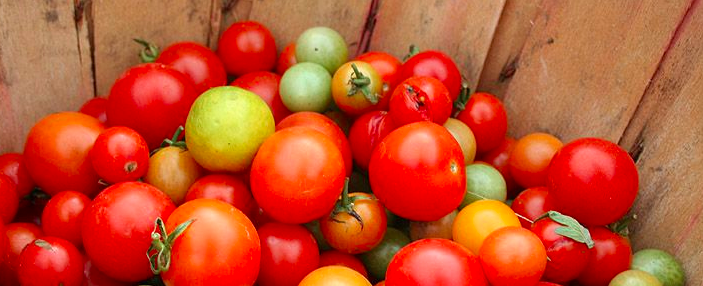
Rest assured: our food always contains, in sufficient quantity, the nutrients that our body needs! A short tour of the food components.
Nutrient contents vary
The components vary a lot from one species to another: between rapeseed and wheat seeds, for example, the former are much richer in fat components, the latter in starch.
And within the same species, there are strong differences in grades. Thus, the Ciqual table of nutritional composition of food ( see the dedicated website of ANSES ) indicates an average calcium content of raw kale of 185 mg / 100g fresh product, but with a minimum of 44 and a maximum of 460 , a gap of more than 10 times! The raw carrot, for calcium always, oscillates between 9 and 44 mg / 100 g, with an average to 32.6. And so for all the products and the constituents analyzed: the minimum-maximum differences can be important.
Have grades changed?
“When we look at the composition tables of the 50s and the current tables, there is no change. The vitamin C levels of apples are the same in the past and today, “notes Catherine Renard, Director of UMR INRA-University of Avignon Safety and Quality of Plant-Based Products,” and when there are differences , as can be seen in iron, they remain anecdotal and can be explained in part by the methods of analysis, more precise today.
A comparison of the 1960 and 2016 tables published in the journal of the Académie d’Agriculture shows that the average levels of fresh produce remained broadly stable from one component to another. There are sometimes some differences, more or less. Thus, wheats and cabbages are on average richer inprotein , while green beans and carrots are depleted. Carbohydrates have decreased in some vegetables like tomato, lettuce, green beans and cabbage. The magnesium and potassium contents are remarkably stable. As for vitamin C, it did not vary except in carrots. Beta-carotene, a precursor to vitamin A, has only increased in the current varieties of leek and lettuce (X3).
Why so many variations?
“Those responsible for the nutrient richness are first and foremost varieties, ” explains Catherine Renard, “and then plays the cross-product effect of the maturity of the product at harvest with the storage method.” Concentrations can increase or decrease with the maturation of plant organs: the vitamin C content is twice as high in tomatoes, strawberries, peppers, immature beans as ripe, but for peas it is the opposite.
During storage the contents, especially of vitamins, decrease rapidly, but not always: in spinach leaves vitamin C drops very quickly, while in the carrot, which is a root, storage organ, it does not move : everything depends on the component and the plant. Processing canned, frozen or cooked dishes also alters certain nutrients.
The year effect is essential: according to the climatic conditions, for the same variety the results are extremely varied. The intensity of the fertilization, the sunshine, the temperature, play a lot on the contents of the product. “This set of factors is very complex to unwind! In any case, what is important is to “consume as much as possible seasonal products being attentive to their conservation,” concludes Catherine Renard.
What role does selection play?
Comparisons show that there has been no upheaval since the 1960s. In tomato, the concentrations of vitamin C and carotenoids are identical in ancient and modern varieties * grown at the same time.
But when compounds are linked to unfavorable characteristics, they were counter-selected, as in the 50’s cucurbitacin responsible for cucumber bitterness. The protein content of wheat has been increased because it is an important criterion selected for breadmaking. The inheritance of these characters is complex because they often depend on several genes. Research is continuing to better understand the genes involved, how they work, and to be able to propose improved varieties with higher levels of compounds that are desirable for health or, on the contrary, without undesirable substances such as allergens.
Rapeseed oil, better for health
Rapeseed oil is one of the most consumed in France. In connection with the advice of nutritionists, its composition and its content of “good” fatty acids (omega 3) has been improved by selection, for the sake of our cardiovascular and neurological systems. Similarly, the sulfur compounds have been greatly reduced, so as to make the residue of the pressing of the seed oil, called cake, more appetizing for the animals. It is thanks to this that the rapeseed crop has been able to develop and consumers benefit from a quality oil for their health.